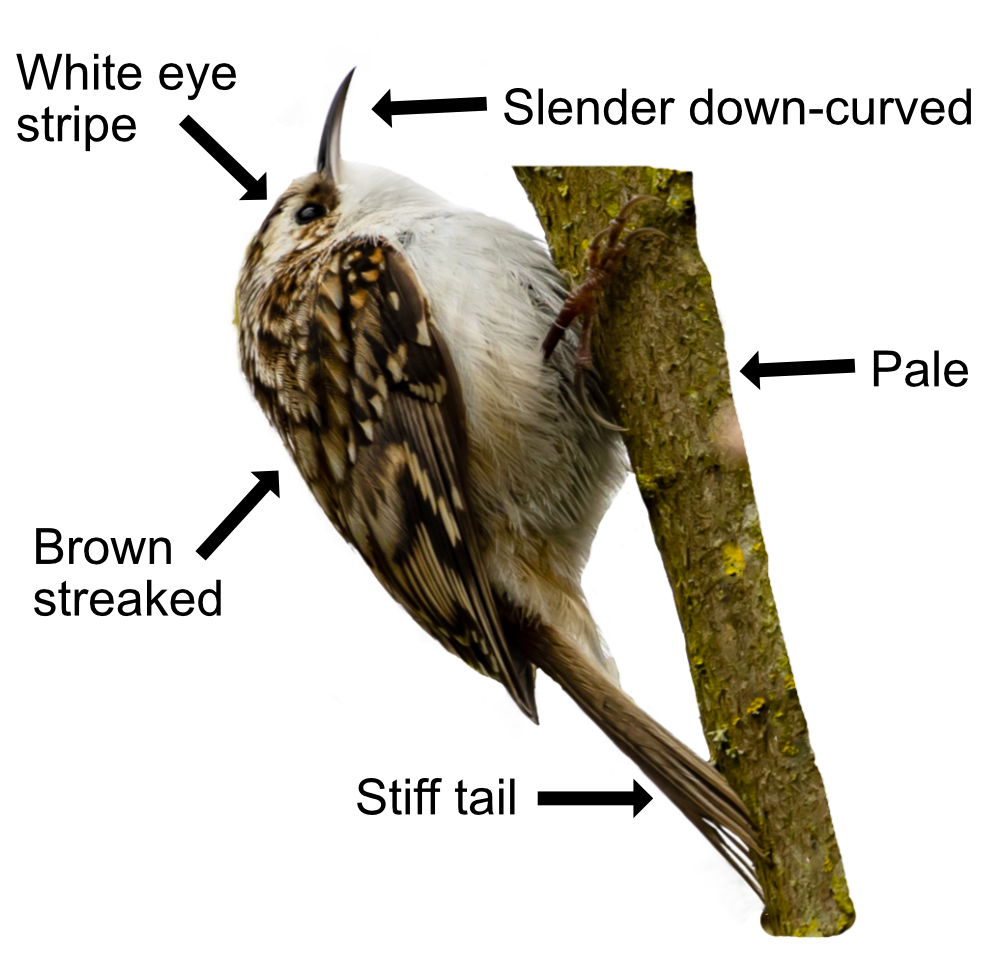
The Treecreeper is a small, very active, bird that unsurprisingly lives in trees. It hardly ever stays still like an ever climbing mouse. It is difficult to see for more than a few seconds as their normal method of feeding is to jerkily spiral round a tree, moving upwards, until it reaches the top before flying down to start on the next one. You have to be sharp eyed to spot the little fellows as they blend in amazingly with the tree trunk. They are found mainly in larger woods, parkland or by streams where there is a corridor of connected trees. Their favourite trees are redwoods as they can make comfy holes in the soft bark to roost in.
The Treecreeper is smaller than a Great Tit. It has a brown streaked back, whitish underparts, a long slender downward curved bill, and a ragged stripe over the eye. There is a buff wing bar together with stiff pointed tail feathers which help it creep up the tree trunks. If a Treecreeper is disturbed, it generally freezes, relying on its camouflage to stay hidden. Its black and brown mottled plumage makes it look like the bark of a tree. Their song sounds like "see see less sissy see" and is very quiet, thin and high-pitched. You have to listen carefully to hear it.

Treecreepers feed on insects and spiders by exploring the bark and crevices using their long, sharp beaks to find them. They eat seeds during the winter months when insects are scarce. All things they can find readily on a tree.
They breed between April and July, taking advantage of the plentiful supply of caterpillars to feed their young. When it comes to nest building, the Treecreeper did not opt for the most common twig solution. Instead, they build their nest behind a flap of loose bark in order to stay hidden from attack by woodpeckers and squirrels who will steal the eggs and chicks. They lay a base of twigs and then add grass, moss, and lichen, finishing it with wood chips. It takes them about a week to build the nest. The female then lines the nest with hair, wool and feathers to make it comfy. She lays 5-6 pink-speckled white eggs which hatch after 14 days. The young can fly 15 days later. The tiny nest can get quite crowded towards the end. They usually raise two broods.
The Treecreeper is mainly a sedentary resident with 200,000 territories and, on the whole, they do not move far. They are homebodies and stay in their own small territories, some sticking to only one tree! Young Treecreepers spread out from their breeding territories in autumn but most stay within 20 km of where they were born. A few northern Treecreepers move south for winter. Overall, their population is mainly stable.
Their Latin name is 'certhia familiaris' derived from the Ancient Greek 'kerthios' for a small tree-dwelling bird described by Aristotle and others, and the Latin 'familiaris' for 'familiar' or 'common'. It is just a common little tree bird. A local West Country name for the treecreeper is the 'tree mouse', which suits it perfectly.